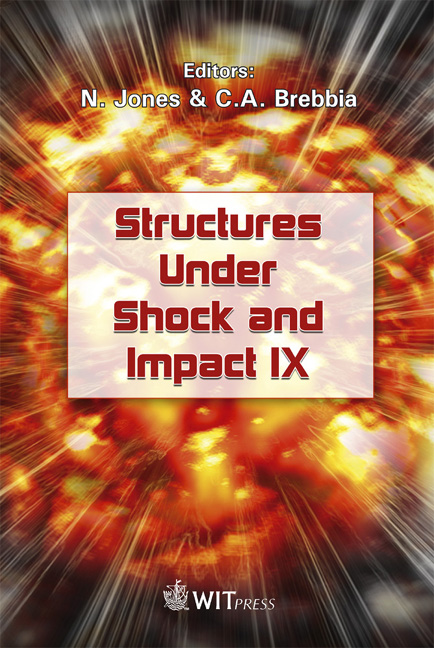Dynamic Interpretation Of Brittle Fracture
Price
Free (open access)
Transaction
Volume
87
Pages
10
Published
2006
Size
352 kb
Paper DOI
10.2495/SU060321
Copyright
WIT Press
Author(s)
P. Brož
Abstract
This paper presents constitutive simulations for cracked solids based on continuum damage mechanics. The aim is to demonstrate that the models can predict the experimentally observed effects in brittle materials. For a reference specimen, we have chosen a slant crack that is centrally located in a concrete panel, under step tensile pulse loading. Simultaneously, we observed the location of the damage and the tension – softening phenomena. We include a technique employing standard finite elements and a domain integral, Jˆ , to set the dynamic stress intensity factor for a fast growing crack in both a linear elastic and a viscoelastic body. Keywords: dynamic characteristic, energy release rate, failure, flow rule, internal variable, strain rate, sublevel crack. 1 Introduction Precise predictions of the response of brittle materials require an understanding of their dynamic fracture characteristics. Many observed effects, like the strainrate phenomena, crack-tip damage, and tension softening, may not be elucidated by classical elastodynamic fracture mechanics. In the proposed study, the dynamic fracture of brittle materials is expounded with the use of a continuum damage simulation in accordance with the E.P. Chen model [1]. Concurrently, the material is approximated as a continuum with a random distribution of sublevel cracks. Mobilization of these cracks by the load leads to progressive damage to the material. In the continuum grade, the softening of the material moduli responds to damage accumulation. To indicate the practicality of this model, we investigated, the problem of an oblique crack located centrally in a concrete slab, and subject to the impact of a step tension impulse applied at the boundary of the panel. This version explains the dynamic fracture course as a
Keywords
dynamic characteristic, energy release rate, failure, flow rule, internal variable, strain rate, sublevel crack.





